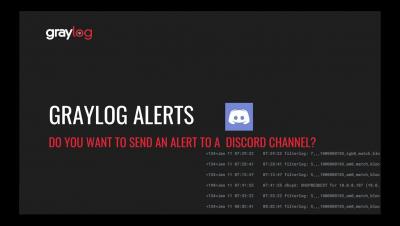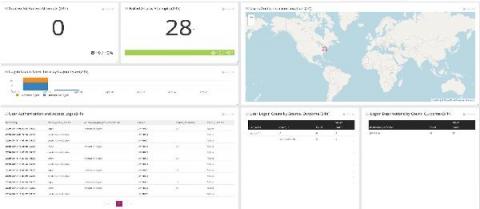Security | Threat Detection | Cyberattacks | DevSecOps | Compliance
Graylog
Lookup Tables and Integration with MISP
How to Send A Graylog Alert to Discord
How to Proactively Plan Threat Hunting Queries
As your security capabilities improve with centralized log management, you can create proactive threat hunting queries. Setting baselines, determining abnormal behavior, and choosing an attack framework helps you mitigate risk and respond to incidents. To reduce key metrics like the mean time to investigate (MTTI) and mean time to respond (MTTR), security operations teams need to understand and create proactive queries based on their environments.
Tour of Graylog v4.0
You've Installed Graylog - What's Next
Security Log Management Done Right: Collect the Right Data
Nearly all security experts agree that event log data gives you visibility into and documentation over threats facing your environment. Even knowing this, many security professionals don’t have the time to collect, manage, and correlate log data because they don’t have the right solution. The key to security log management is to collect the correct data so your security team can get better alerts to detect, investigate, and respond to threats faster.
Executive Orders, Graylog, and You
In the last six months, multiple major cyber attacks have severely impacted hundreds of organizations in both the public and private sectors, and disrupted the daily lives of tens of thousands of their employees and customers.
Threat Hunting with Threat Intelligence
With more people working from home, the threat landscape continues to change. Things change daily, and cybersecurity staff needs to change with them to protect information. Threat hunting techniques for an evolving landscape need to tie risk together with log data. Within your environment, there are a few things that you can do to prepare for effective threat hunting. Although none of these is a silver bullet, they can get you better prepared to investigate an alert.
Monitoring Logs for Insider Threats During Turbulent Times
For logs and tracking insider threats, you need to start with the relevant data. In these turbulent times, IT teams leverage centralized log management solutions for making decisions. As the challenges change, the way you’re monitoring logs for insider threats needs to change too. Furloughs, workforce reductions, and business practice changes as part of the COVID stay-at-home mandates impacted IT teams.










